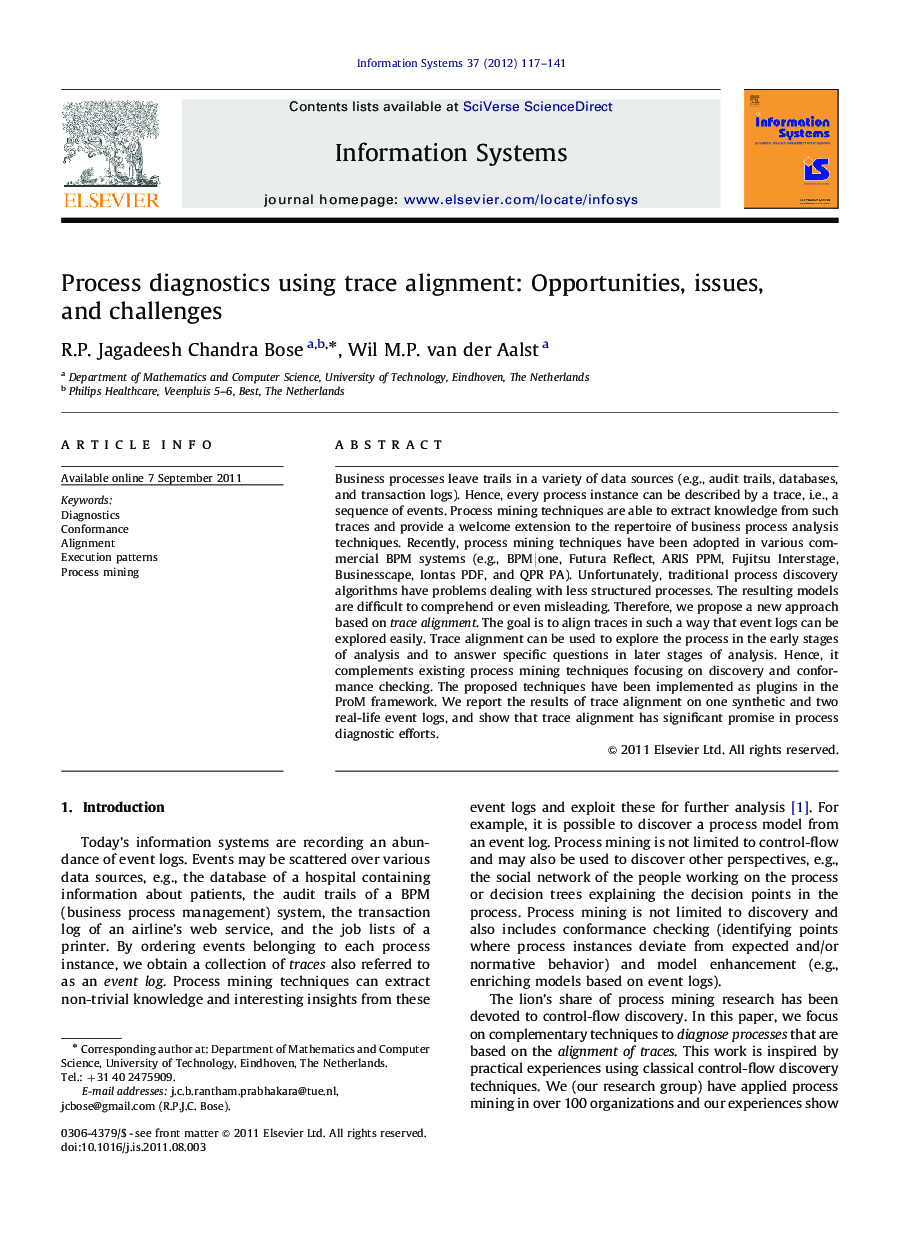| Article ID | Journal | Published Year | Pages | File Type |
|---|---|---|---|---|
| 397435 | Information Systems | 2012 | 25 Pages |
Business processes leave trails in a variety of data sources (e.g., audit trails, databases, and transaction logs). Hence, every process instance can be described by a trace, i.e., a sequence of events. Process mining techniques are able to extract knowledge from such traces and provide a welcome extension to the repertoire of business process analysis techniques. Recently, process mining techniques have been adopted in various commercial BPM systems (e.g., BPM|oneBPM|one, Futura Reflect, ARIS PPM, Fujitsu Interstage, Businesscape, Iontas PDF, and QPR PA). Unfortunately, traditional process discovery algorithms have problems dealing with less structured processes. The resulting models are difficult to comprehend or even misleading. Therefore, we propose a new approach based on trace alignment. The goal is to align traces in such a way that event logs can be explored easily. Trace alignment can be used to explore the process in the early stages of analysis and to answer specific questions in later stages of analysis. Hence, it complements existing process mining techniques focusing on discovery and conformance checking. The proposed techniques have been implemented as plugins in the ProM framework. We report the results of trace alignment on one synthetic and two real-life event logs, and show that trace alignment has significant promise in process diagnostic efforts.
► By aligning traces we can see the common and frequent behavior, and distinguish this from the exceptional behavior. ► The proposed approach has been realized within the ProM framework. ► Three case studies have been discussed to substantiate the claim that trace alignment has significant promise in process diagnostics.
